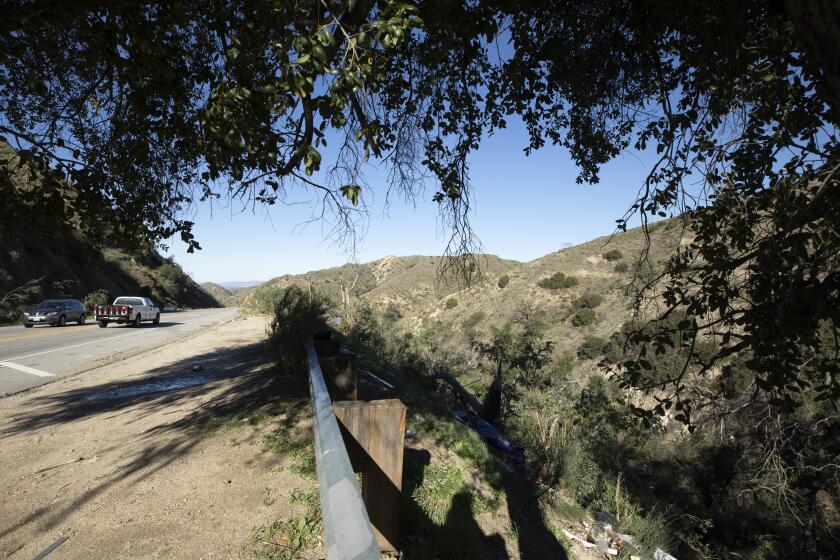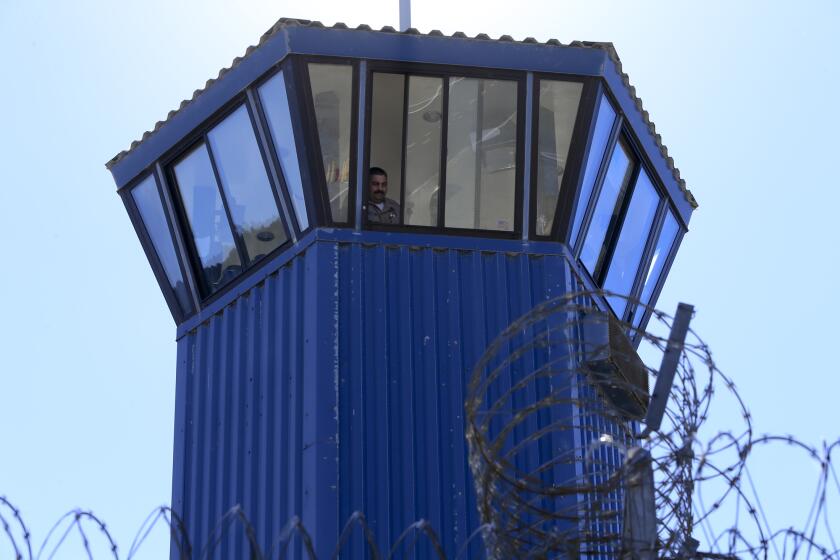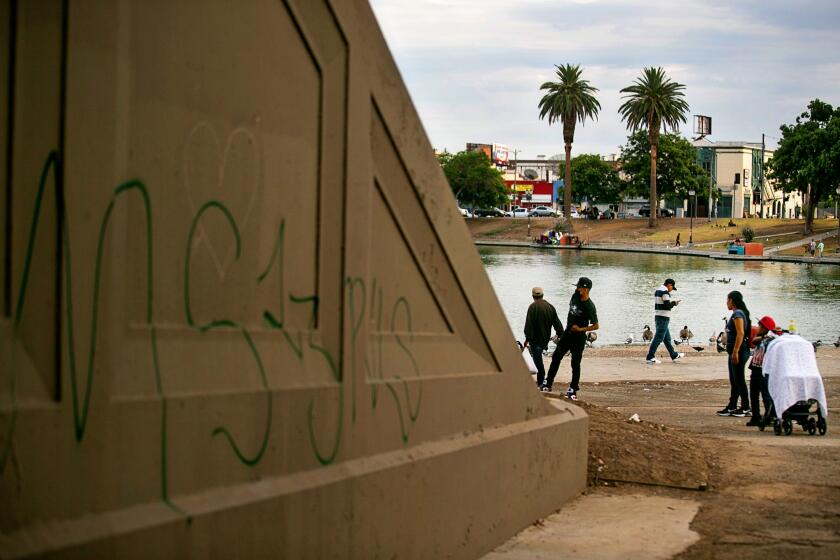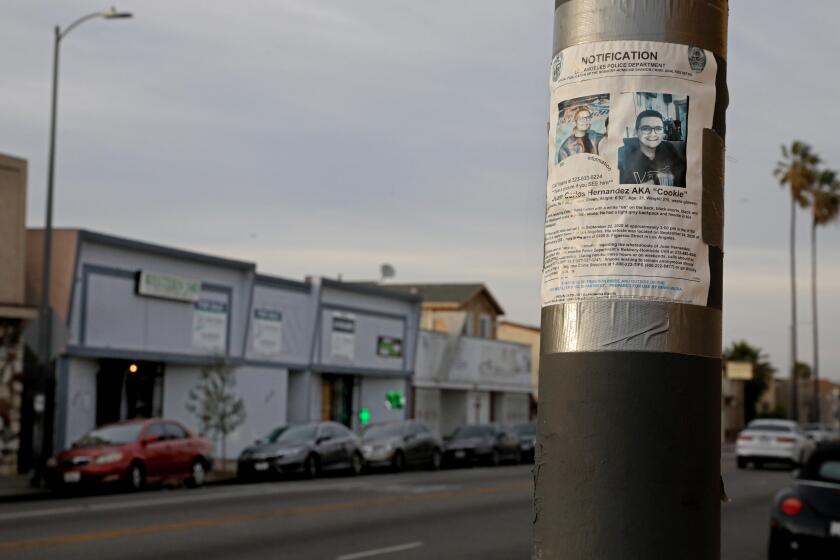A violent gang, an FBI informant and the truth behind one of L.A.’s deadliest fires
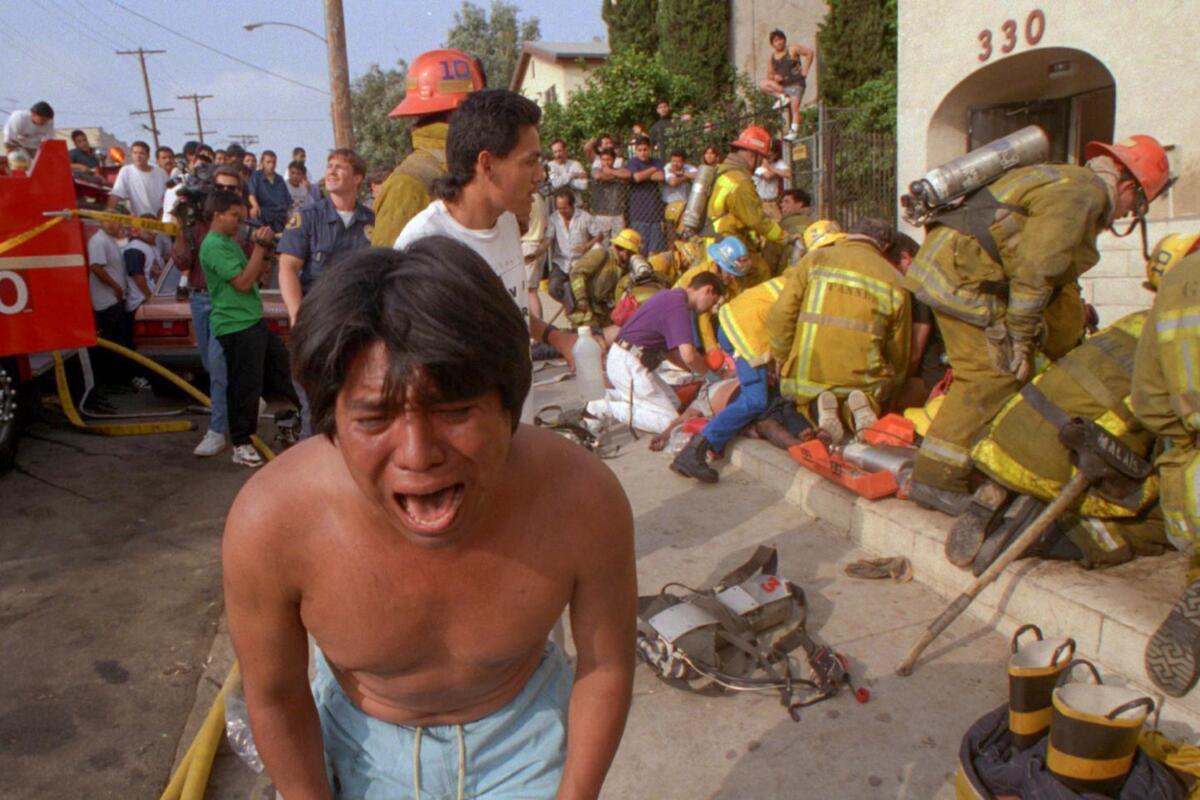
- Share via
The middle-aged man took the witness stand and was asked to recall an afternoon 29 years ago.
“I do remember that day,” he said.
He had been eating with friends at a burger stand in Westlake when firetrucks and ambulances screamed by, he said. They followed the lights and sirens and saw the fire.
A three-story apartment building was belching smoke; people were jumping off balconies. He said he helped carry victims across the street and laid them on the pavement. It was, he said, a “horrible incident.”
But Ramiro Valerio wasn’t testifying as a witness. He was on trial for the deaths of the seven children and three women who perished that day in 1993, in one of L.A.’s deadliest fires.
Now 49, Valerio has gray hair and carries the beginnings of a paunch. Dressed in a collared shirt and wearing a pair of thick glasses, he could have been mistaken for a librarian.
But three decades ago, he belonged to 18th Street, a gang that controlled one of Los Angeles’ most lucrative marketplaces for heroin and crack cocaine. It was the drugs — the need to sell them without interruption and to keep money flowing to the gang’s imprisoned boss — that led Valerio to order that the fire be set, prosecutors said.
The trial was a step back to a time when gangs turned entire blocks into drug bazaars, when rivals shot it out in broad daylight, when even police and politicians couldn’t deny who controlled those streets.
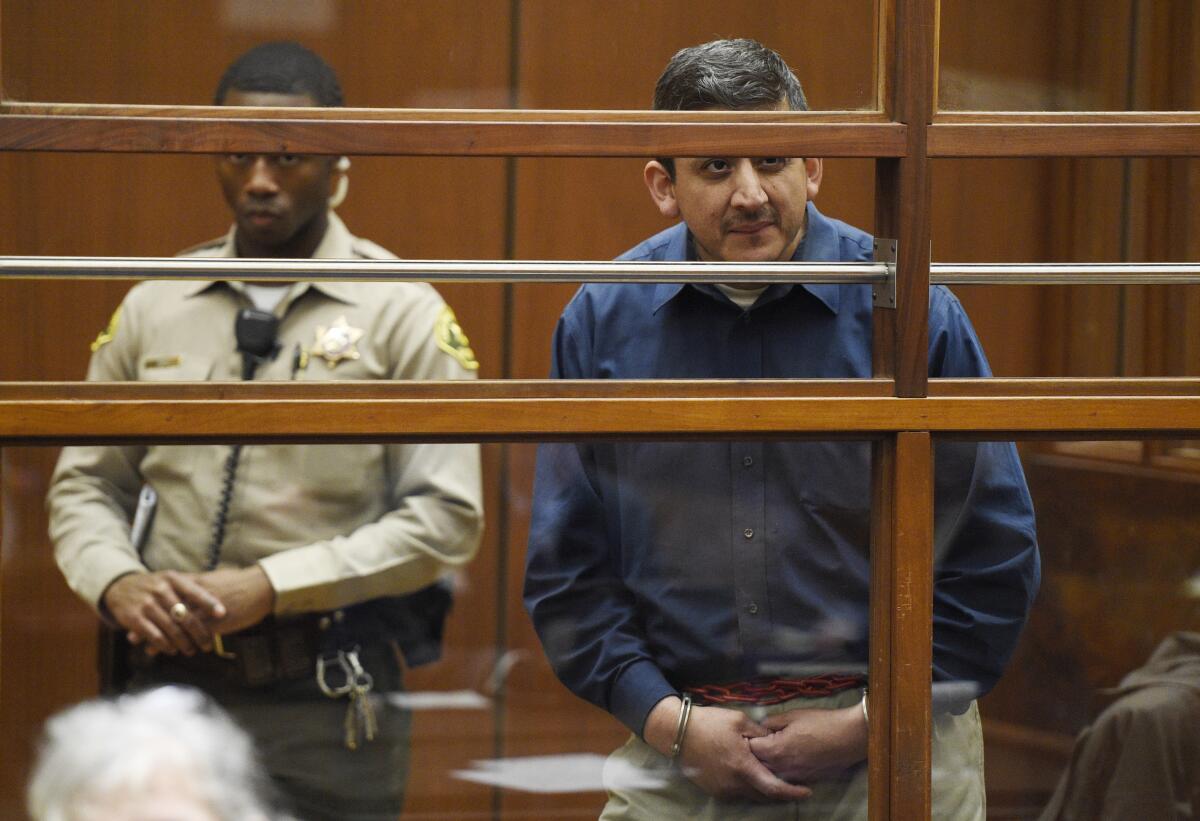
‘The Money Guy’
Born in 1973, Ramiro Alberto Valerio was 4 when his family moved from East L.A. to Westlake. At 11, Valerio testified, he joined Rockwood, a gang formed by students at Virgil Middle School who played football together.
Most of the boys in Rockwood had older brothers, fathers or uncles in 18th Street, one of the city’s largest gangs. The youngest of four boys, Valerio had two brothers in 18th Street.

Subscribers get exclusive access to this story
We’re offering L.A. Times subscribers special access to our best journalism. Thank you for your support.
Explore more Subscriber Exclusive content.
When Valerio was 15, he joined his brothers’ clique of 18th Street, the Columbia Lil Cycos. He recalled how three of its members had initiated him with a beating. He took on the nickname “Greedy.”
The Columbia Lil Cycos’ turf is Westlake, a teeming district just west of downtown Los Angeles. Its residents, many of them Central American immigrants, crowd into aging apartment buildings. Vendors line the sidewalks, selling everything from pupusas to jewelry to counterfeit documents.
In the early 1990s, the main offering in Westlake was drugs. Prosecutors at Valerio’s trial called the neighborhood — in particular, a stretch of Burlington Avenue — “the drug capital of Los Angeles.”
He thought he was going to meet a woman he’d been messaging online. But Bryan Cojon Tuyuc drove into a trap set up by the street gang MS-13, detectives say.
Street-level dealers — traqueteros — would stand on corners, holding in their mouths balloons filled with heroin and pieces of rock cocaine wrapped in cellophane. If the police came, the dealers swallowed their product.
“You’d stop your car in the street, and you’d have five guys running up to your car, trying to give you a better deal,” said a former gang member who sold drugs in the area and asked not to be named because of fears for his safety.
The roughly 140 men in the Mexican Mafia, a prison-based syndicate that wields control over Latino street gangs, recognized that they could leverage their influence to levy taxes on drug sales. Gangs were ordered to collect “rent” from drug dealers and other criminals operating in their territory.
Dealers in Westlake were assigned to work in shifts and instructed to sell drugs at fixed prices, the gang member said. Suppressing competition kept prices — and profits — high.
Valerio returned to this new reality from juvenile camp, where he’d been sent after getting caught with a gun. An older member of 18th Street known as “Sinner” gave the 18-year-old Valerio the responsibility of taxing dealers on the corner of Burlington Avenue and 6th Street, Valerio testified.
After Sinner and another senior gang member were arrested, Valerio testified, he became “the money guy,” working directly under Francisco Martinez, “the boss of the whole thing.”

Luck runs out for Donald “Little Man” Ortiz, who refused offers of protection after being banished and marked for death by the powerful Mexican Mafia.
Known as “Puppet,” Martinez is an 18th Street member who went on to join the Mexican Mafia. From his cell at the maximum-security Pelican Bay prison, Martinez collected taxes and relayed orders to his underlings through his wife, Valerio testified.
“All of us templated our business after Puppet Martinez,” Rene Enriquez, a Mexican Mafia member who defected in 2002, told prosecutors in Valerio’s case. “Puppet Martinez was efficient at this. He had groups of individuals, not just drugs, but legitimate businesses — those little taco ladies that sold those little cucumbers with chili on them — and fake CDs. They were taxing everything.”
Valerio delivered money to Martinez’s wife at her home in Huntington Park and made the 12-hour drive to Pelican Bay with her to see her husband, he said.
“He liked to know everything,” Valerio said. “If you made a move that disrupted his business, he wanted to know. If you didn’t and he found out, that would not be good for you.”
Valerio worked closely with two other members of his clique.
The attacks demonstrate that MS-13 gangs continue to hold the poorest and most marginalized who live and work in the neighborhood in their grip.
One was Juan “Termite” Romero. Seven years older, Romero had bought Valerio clothes as a child and shown him how to dress like a gangster, Valerio testified. He even taught Valerio how to drive. But when Valerio became Martinez’s envoy, it was his turn to show Romero how to tax the drug trade, he said.
The other was Anthony “Coco” Zaragoza, a childhood friend from Valerio’s days in Rockwood. Valerio would tell authorities that while Romero was “the brains” of the clique, Zaragoza was its “enforcer.”
Valerio had a reputation as an earner — someone who had moved beyond the violence and rivalries that dominate gang life. He recognized the remarkable amount of money that can be wrung from impoverished neighborhoods through dealing drugs.
“He’s not just a Johnny-come-lately, you know, nickel-dimer,” said Enriquez. “This is a guy who went into the organization and who could have made his bones, had he not messed up.”
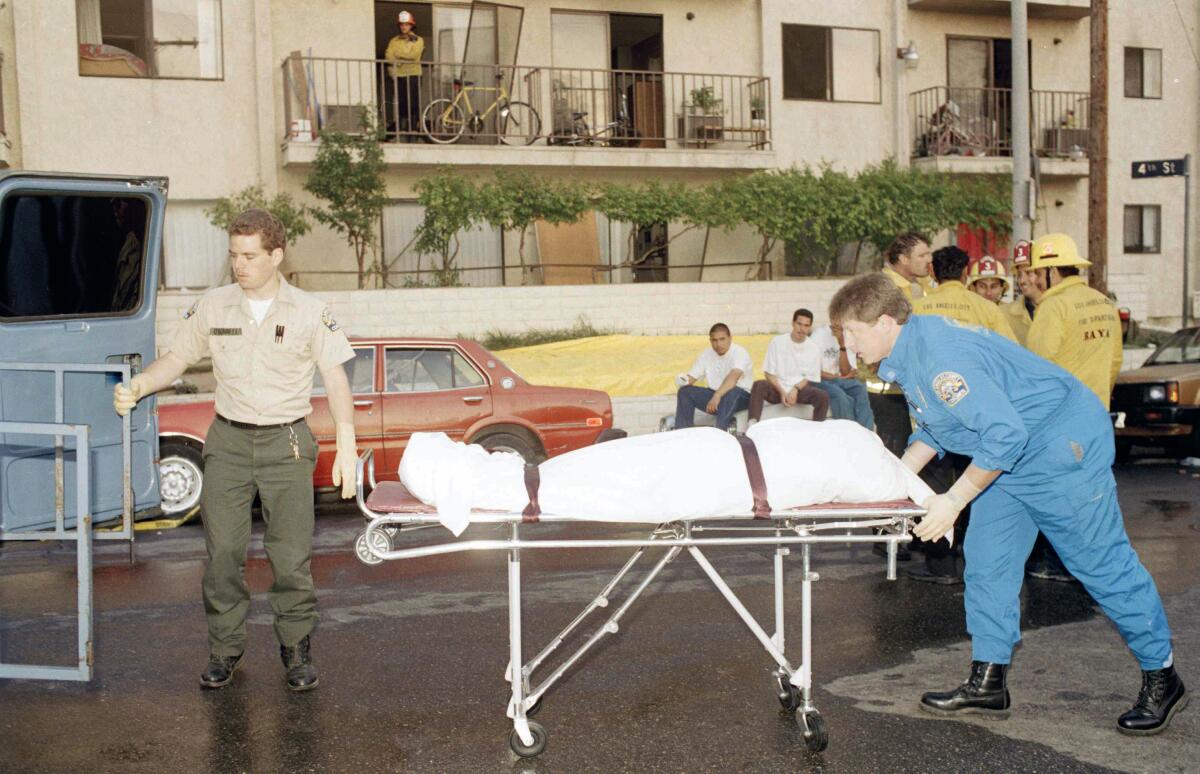
‘A little fire, a fire to scare them’
One of the people paying taxes to Valerio was Johanna Lopez. A 28-year-old Honduran national, Lopez oversaw five mayoristas, or wholesalers, who supplied rock cocaine to about 30 traqueteros.
For the right to sell drugs on Burlington Avenue, Lopez initially gave Valerio a car and paid him and Romero about $7,000 a week, she testified at Valerio’s trial. By 1993, she said, the weekly figure had risen to $25,000.
Valerio told jurors these sums were vastly inflated, saying Lopez paid him $400 to $500 a week.
When a 21-year-old student went missing, his mother searched for him until LAPD detectives pieced together what happened.
Lopez’s traqueteros worked outside 330 S. Burlington Ave., a 67-unit stucco building that was home mostly to immigrants from Central America and Mexico. At trial, several former tenants recalled seeing the dealers fishing drugs out of their mouths, the customers driving up at all hours, the gang members loitering outside to ensure that drugs and money changed hands uninterrupted.
Lopez testified that she complained to Valerio and Romero about the building’s property manager, who had gone to police and changed the locks to keep the dealers and gang members from fleeing inside when the cops showed up.
Zaragoza’s former wife took the stand to recall that, at a meeting, Valerio had said a beating from the gang had failed to bring the property manager in line.
“We should do a little fire,” she remembered Valerio saying, “a fire to scare them.”
Valerio testified that he was never told the manager had called the police. Even if he had, it would not have disrupted business, he said: “The area is hot, regardless. There’s drug-dealing everywhere.”

‘This thing is going to get hot’
Smoke began billowing from 330 S. Burlington in the late afternoon of May 3, 1993.
John Musil, a firefighter from the Los Angeles Fire Department, arrived around 4:30 p.m. Now a captain, Musil recalled seeing people jumping from balconies as paramedics tried to revive dozens sprawled on the pavement.
Musil went up a stairwell to the third floor. The hallway was “pitch black,” he said, the smoke so thick it was “like being underwater and trying to take a breath.”
He tripped over something in the hallway: the body of a pregnant woman. He pulled her out and returned to the third floor, where he fell over another body. After pulling out that victim, he crawled on his hands and knees, looking for more people, he testified.
Three people were slain within the blighted rooms of the MS-13 destroyer on Rampart Boulevard in 2017 and 2018, authorities said.
Little of the building burned, but the smoke killed 10 people, most of them kids: Lancey Mateo, 1; Jesus Camargo, 4; Jose Camargo, 4; Rosalia Camargo, 6; Yadira Verdugo, 6; William Verdugo, 8; and Leyver Verdugo, 10. Three adults died: Rosalia Ruiz, 21; Olga Leon, 24; and Alejandrina Roblero, 29. Ruiz and Leon were pregnant.
Authorities determined the source of the fire: a mattress outside the doorway to the property manager’s second-floor apartment. It had been doused in lighter fluid.
Several witnesses implicated Valerio and Romero in the arson.
Lopez said that before the fire started, she saw Valerio hand a bag to Romero, who announced, “Better leave here, because this thing is going to get hot.”
A resident said she saw Valerio and Romero standing near an entrance to the building about 15 minutes before the fire broke out. Romero went inside while Valerio waited by the door, the resident testified. After Romero left through the garage, he and Valerio walked off together, she said.
An 18th Street member testified that after the fire started, Valerio showed up at an apartment with Romero and another gang member carrying black trash bags and smelling of lighter fluid.
Valerio disputed these accounts. He had been eating at a burger stand on 6th Street with friends when the firetrucks and ambulances raced past, he said. Thinking that a member of their gang had been shot, they followed the emergency vehicles, he testified.
“Did you have anything to do with this fire?” asked his lawyer, James Hallett.
“No.”
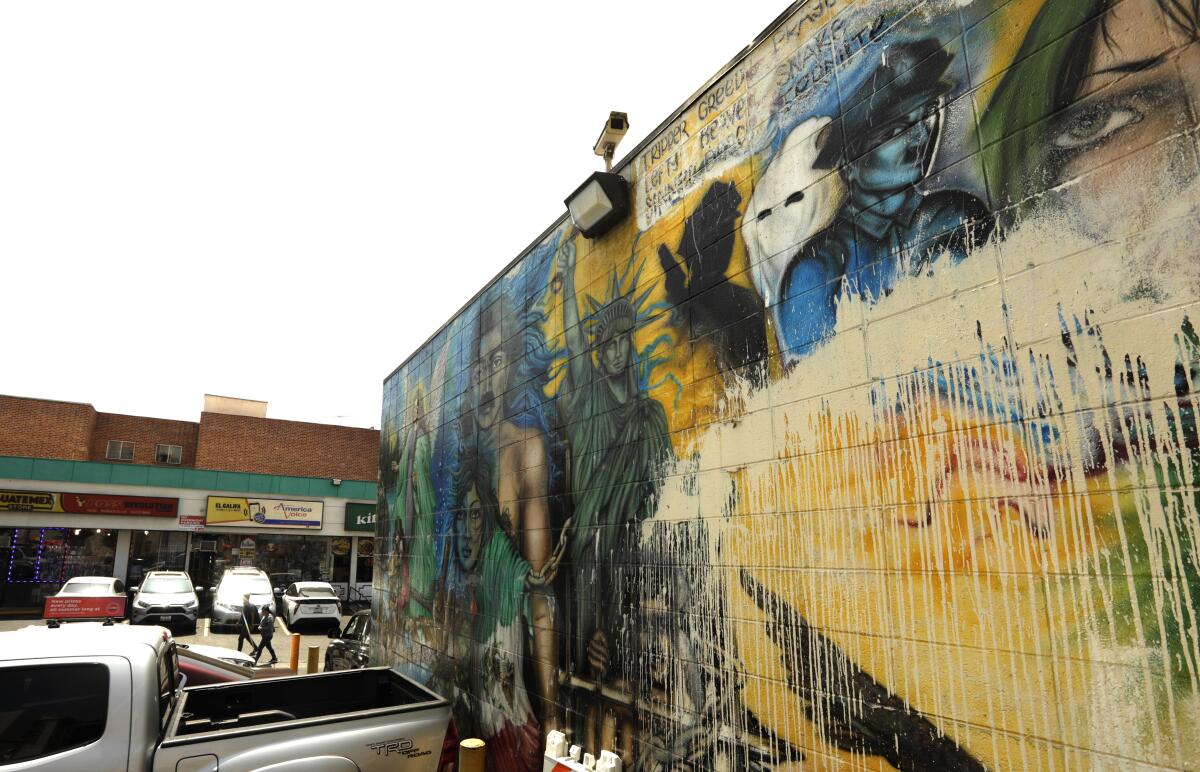
‘I wanted to walk away alive’
Valerio kept collecting money for his boss across 18th Street territory until 1994, when members of his gang began accusing him of cooperating with police. Zaragoza once pointed a gun at his head and declared him a “snitch,” Valerio testified.
Another 18th Street member tried to calm Zaragoza, reminding him that he and Valerio had known each other since they were kids, he recalled. Zaragoza lowered the gun.
But Zaragoza, the clique’s enforcer, wasn’t wrong. That year, Valerio testified, he had met with an officer at the LAPD’s Rampart Division and offered to inform on his gang.
Valerio said he believed it was a corrupt Rampart officer who told either Zaragoza or Romero that he’d turned on the gang. Rampart’s gang unit was plagued at the time by rogue cops who planted guns and drugs on innocent people, beat civilians and sold dope taken from dealers.
The decision to cooperate with police, Valerio testified, was prompted by the 1992 death of an older brother.
Ismael Valerio, who belonged to Rockwood, had been standing with two men when police approached them. One of his companions was armed with a rifle. When Ismael, 20, raised a “dark object,” an officer shot him, The Times reported at the time. The object turned out to be a camera.
Valerio testified that he saw the hurt his mother had suffered from her sons’ allegiance to gangs.
“I promised my mom that I would be the one to get out of the gang,” he said.
But Valerio was in deep.
That year, members of the Mexican Mafia had gathered in a motel room. FBI agents and sheriff’s deputies, who had wired the room with hidden microphones and cameras, listened as the Mexican Mafia members discussed whether Valerio was presenting himself on the street as one of them — a violation of their rules. They agreed that he had and devised a plan to kill him, calling it “Operation Coke Bottle” after the thick glasses Valerio wore due to a degenerative eye condition.
The men also talked of killing Martinez, Valerio’s boss. They’d heard that the two were raking in big money and keeping it to themselves, recalled Richard Valdemar, a retired sheriff’s detective who had monitored the meeting.
“It was crooked to begin with,” Valdemar said of the collection racket, but Martinez and Valerio were, in the Mexican Mafia’s view, “cheating the crooks.”
“‘Greedy’ was the perfect nickname,” he said.
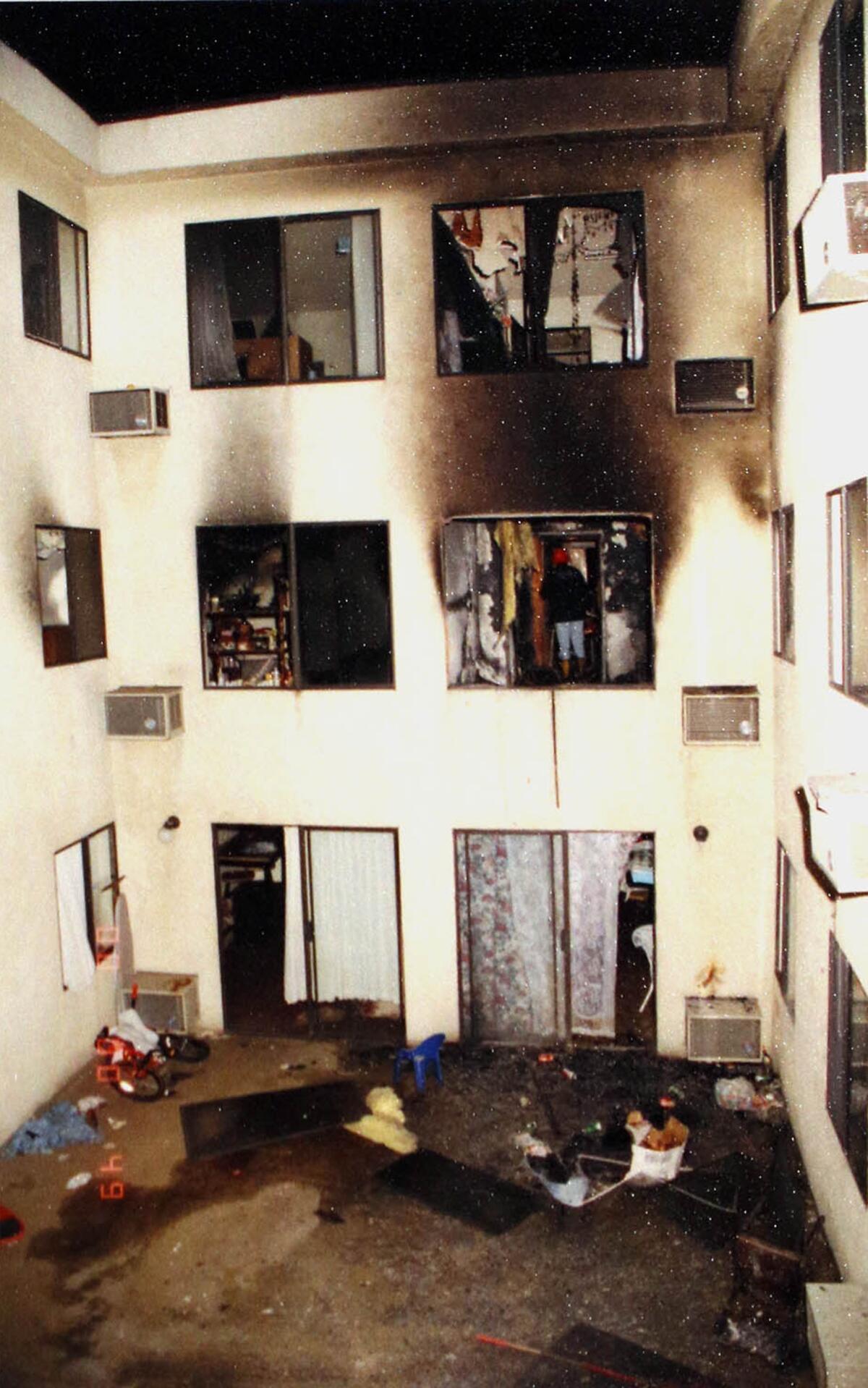
Ernest “Chuco” Castro, a Mexican Mafia member who also was working as a police informant, was tapped by the organization to collect some of the money being generated in Martinez’s territory, Valdemar said.
Castro sent a trusted 18th Street gang member, Carlos “Truco” Lopez, to pick up the money. According to Valerio, Martinez sent word from prison that anyone who saw Lopez was to “get him.”
One night in September, Lopez pulled his Chevrolet Suburban onto Burlington Avenue. Two gunmen were waiting; they raked the SUV with automatic weapons, killing Lopez and a woman in the passenger seat.
Afterward, one of Castro’s men told Valerio that dealers in 18th Street territory needed to sell Castro’s drugs, Valerio testified. When he refused, the man and Castro drove Valerio to a rival gang’s territory, beat him and said he had 24 hours to start supplying dealers with Castro’s drugs, Valerio testified.
“I said OK, because I wanted to walk away alive.”
Valerio returned to the LAPD’s Rampart station and told a detective investigating the killings of Carlos Lopez and his passenger that his friends Romero and Zaragoza were the gunmen.
Prosecutors charged Valerio with murder, accusing him of planning the ambush. But the case against him was dropped. Back on the street, Valerio learned that word was circulating among his gang that he’d been released because he was working for the government, he testified.
In 1997, FBI agents knocked on his door. While monitoring a wiretap, they had overheard members of his gang talk of killing him.
Valerio wasn’t surprised. He told the agents he had heard that Romero and Zaragoza were under orders from Martinez to kill him “whenever they can,” according to an FBI report.
Valerio agreed that day to become an informant for the FBI.
“It was time to do the right thing, frankly,” he testified.
Recruiting Valerio was “like arresting Al Capone’s bookkeeper,” one of his handlers, Carl Sandford, gushed to Tom Diaz, author of the book “No Boundaries: Transnational Latino Gangs and American Law Enforcement.”
“He was a guy who had firsthand knowledge of the entire operation,” Sandford said. Valerio wore a wire and introduced undercover officers to drug wholesalers. The information he gave allowed the FBI to tap the phones of Martinez’s wife.
In 1999, federal prosecutors indicted Martinez, his wife, Zaragoza, Romero and 21 others in a sweeping racketeering case. Before disappearing into the witness protection program, Romero turned on his co-defendants, admitting at trial that he and Zaragoza had shot up the Suburban. Martinez and Zaragoza were sentenced to life in prison without parole. Martinez’s wife got 20 years.
Sandford said their prized informant, Valerio, “never directly participated in violence, as far as the FBI knows, although he may have ordered it done now and again,” according to Diaz’s book.
LAPD detectives didn’t give up on investigating the fire. In 1998, an 18th Street member who survived being stabbed by his own gang told the LAPD that Valerio had ordered it.
Valerio testified that his FBI handlers “told me that LAPD wanted to speak with me about an incident — they didn’t mention a fire — and that I should go.” He agreed. The agents drove him to the LAPD’s headquarters downtown, where he was questioned by a detective.
It was the first time he learned that he was a suspect, he said. Afterward, he said, the FBI “asked me directly: ‘Did you have any knowledge or involvement in the fire?’ I told them no, I did not.”
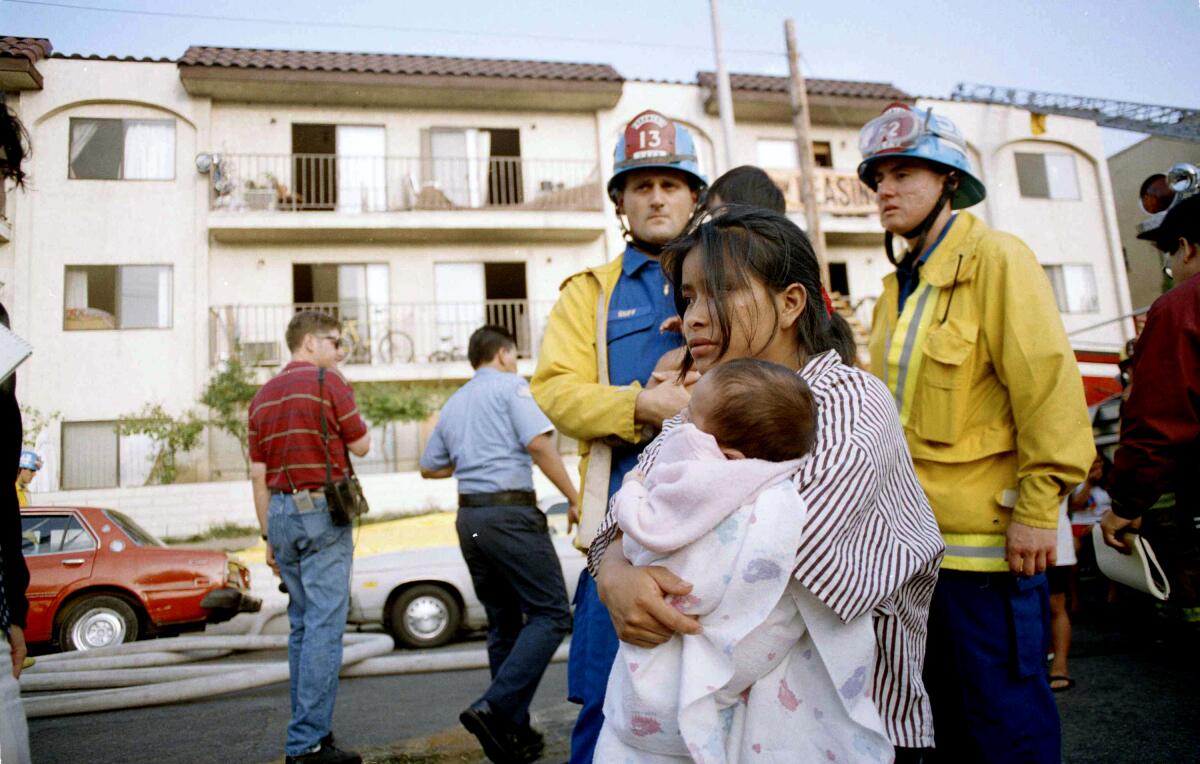
‘Top to bottom, from business to everything’
Years passed. But detectives collected fading memories of witnesses, piecing together fragments of a story that, in their view, pointed toward Johanna Lopez, Romero and Valerio.
In 2011, just as Lopez was about to finish a 15-year prison term for drug trafficking and be deported to Honduras, prosecutors quietly charged her with 12 counts of murder. Years later, she pleaded guilty to two counts of manslaughter and agreed to testify against Valerio in exchange for a 22-year sentence. A gang member who had served as a lookout pleaded guilty to one count of manslaughter and got 11 years.
Detectives in 2016 finally obtained Valerio’s and Romero’s FBI files. In recordings that Valerio made as an informant, he bragged of organizing his gang’s rackets from “top to bottom, from business to everything.” Prosecutors would use his words to make the argument that Valerio, as a leader of the gang and Martinez’s moneyman, had the ability to order the deadly fire and a motive to do so.
The next year, Valerio was arrested at a Rite Aid in Santa Clarita, where he worked as a manager, and charged with murder.
Last week, a jury found him guilty of 12 counts of murder — one for each of the 10 people killed in the fire and the fetuses carried by two of the women.
Romero, identified by prosecutors as the one who lit the fire, is a fugitive and believed to have fled the country.
The building at 330 S. Burlington still stands. No dealers were loitering outside on a recent afternoon, but Columbia Lil Cycos’ presence has endured: “XVIII CLCS ACTIVE” is scrawled in spray paint on the wall of a nearby business that offers cash loans.
Around the corner is a mural that was painted on the side of a doughnut shop a year before the fire. Told that prosecutors had shown a photograph of it to the jury deciding Valerio’s fate, the man who painted it, Carlos “Wiro” Ruiz, said angrily, “Greedy got nothing to do with the mural.”
It began as a tribute to a slain 18th Street member, said Ruiz, himself a former member of the gang. Initially, he said, he had planned to paint the Virgin Mary. But the building’s owner, tired of gang members defacing his property, told Ruiz he’d give him $400 for materials if he painted the whole wall, he said.
Ruiz worked for 22 days. Thirty years later, once vibrant blues, yellows and greens have faded, but the scenes are still clear: a man locked in a cell, a gangster gripping an Uzi, a policeman and a ghost wearing a white hood, representing death.
“The end, it’s, you know, that you die,” Ruiz said. “When you’re in a gang, you’re dancing with the devil.”
Jurors were shown the mural because Ruiz had painted the names of the gangsters who ran the neighborhood at the time. There is Lefty, who was gunned down by a member of his own gang outside a pool hall. Sinner, paralyzed by a bullet to the head. Termite, government witness turned fugitive.
And above the right shoulder of the hooded ghost is Greedy.
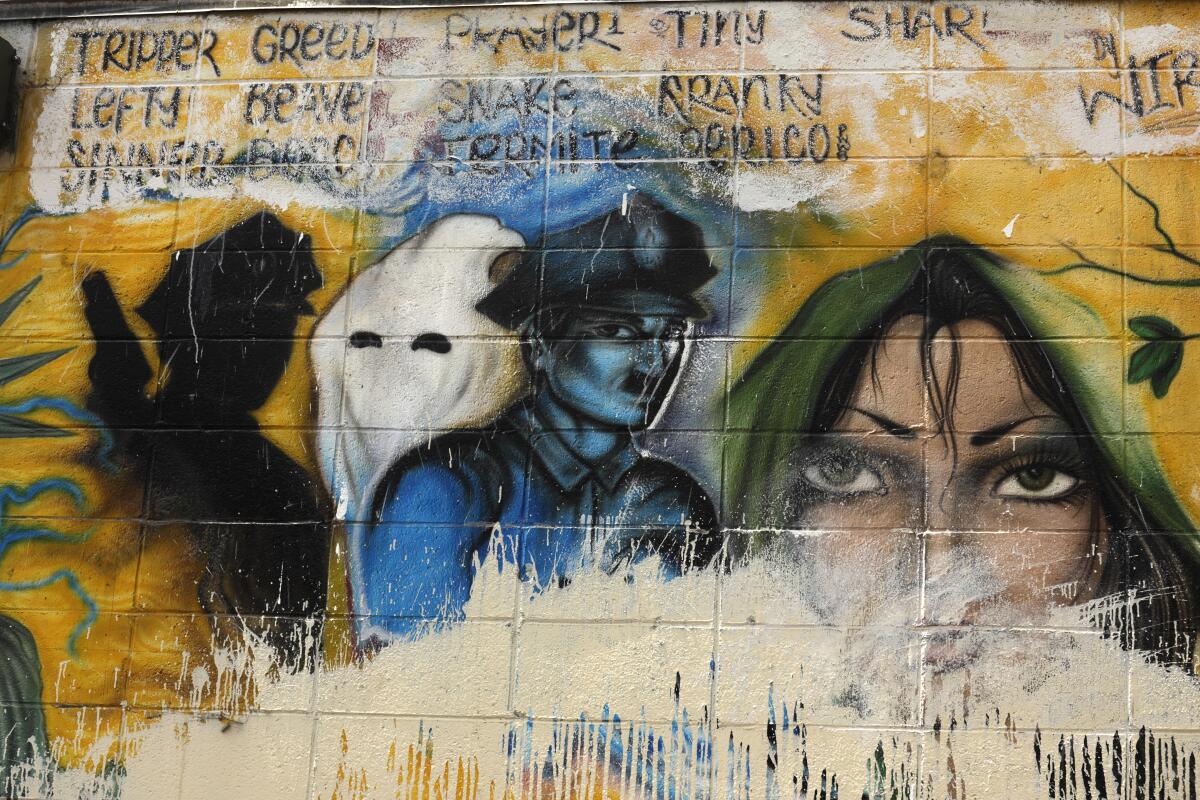
More to Read
Sign up for Essential California
The most important California stories and recommendations in your inbox every morning.
You may occasionally receive promotional content from the Los Angeles Times.
